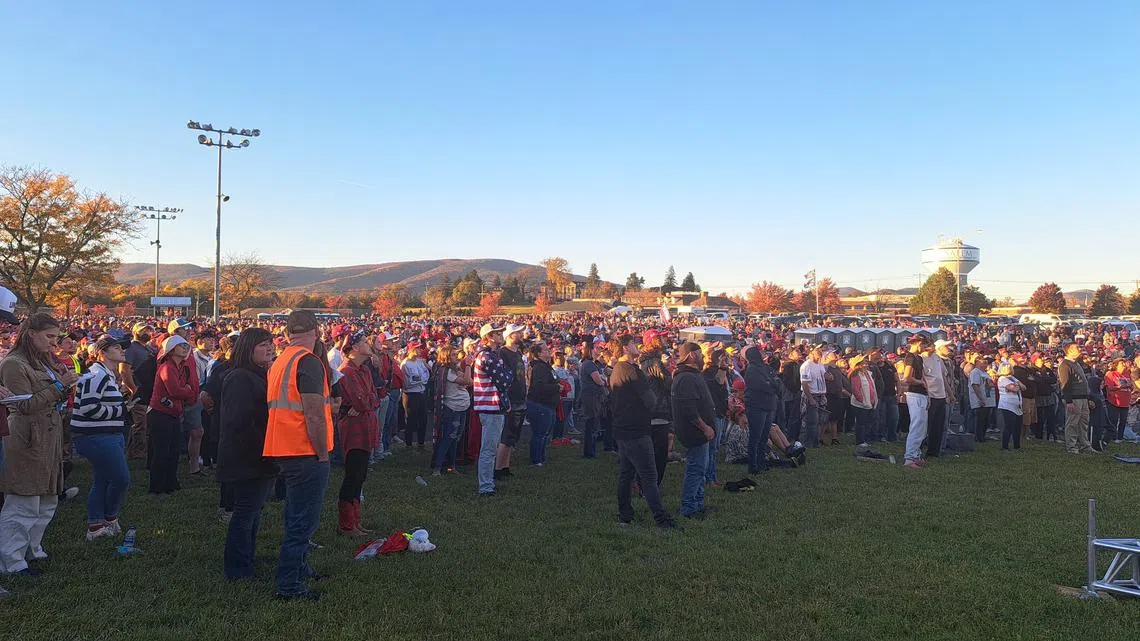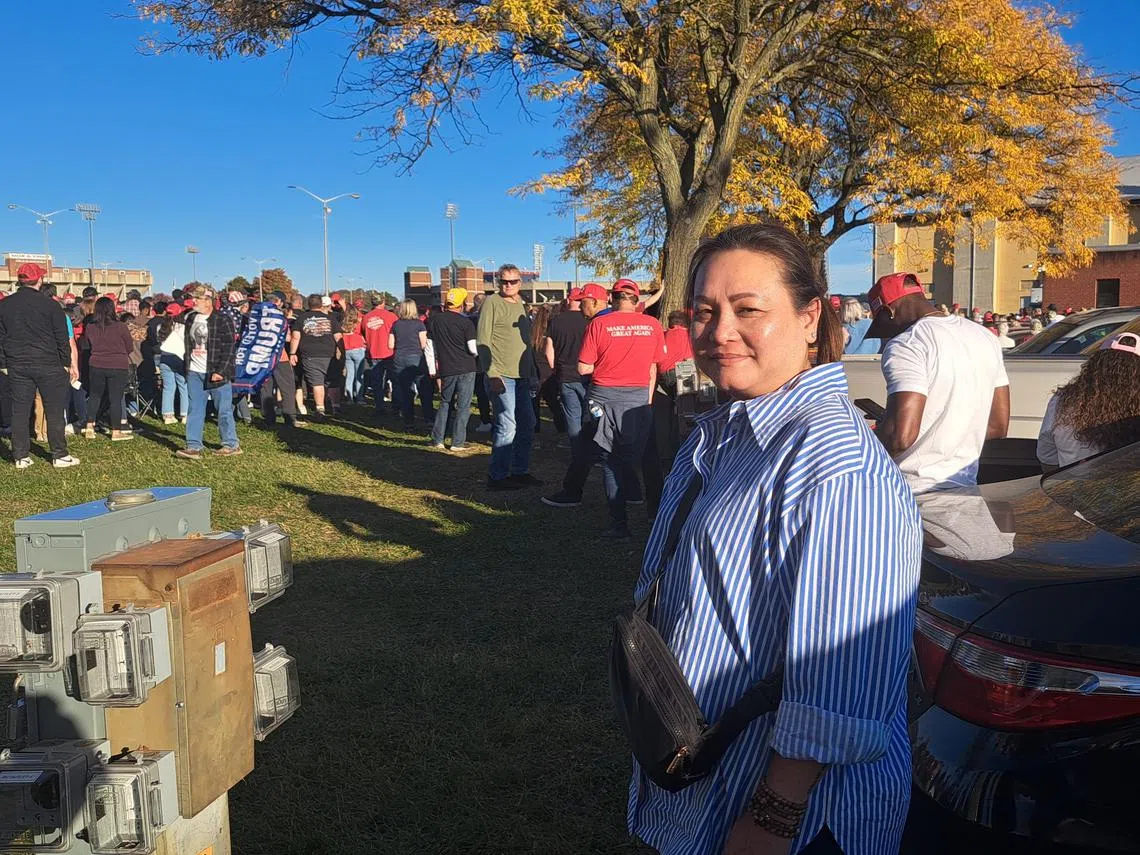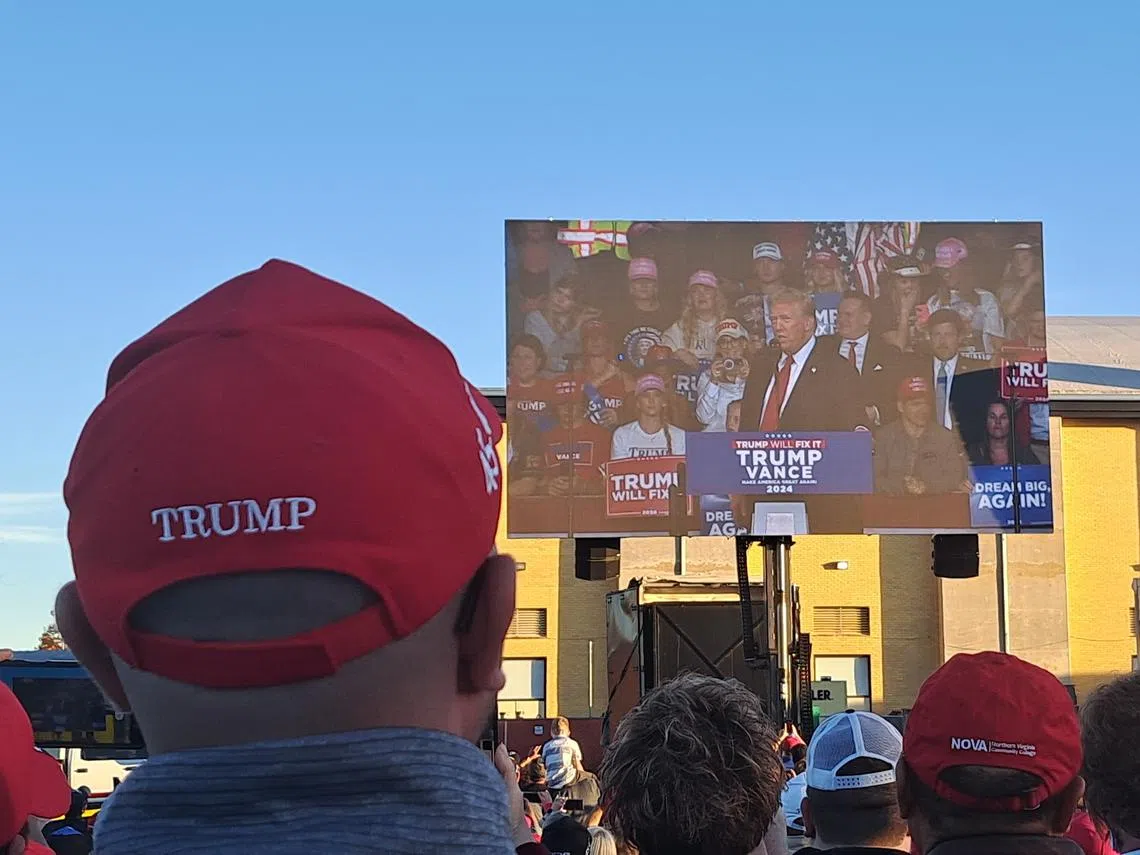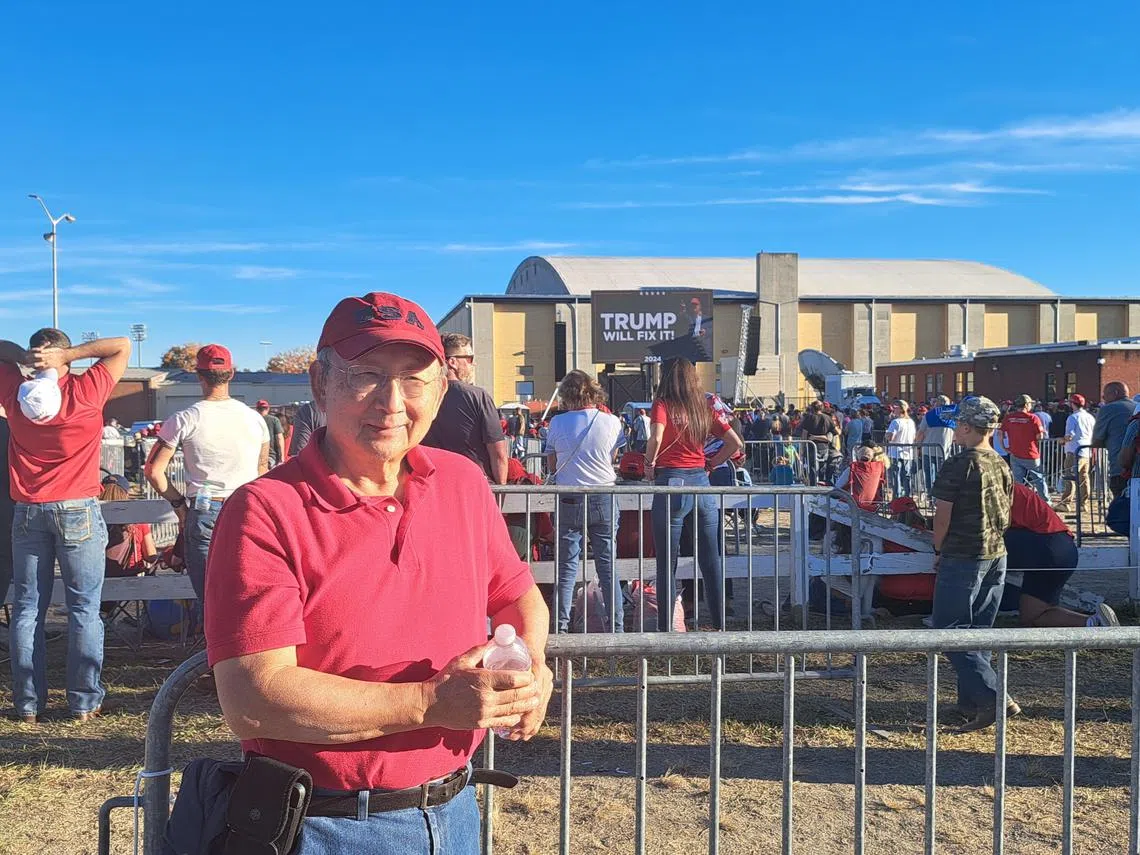Asian-American voter patterns in US elections hint at political shifts and trends to watch
Unprecedented Latino support has been seen as pivotal in Trump’s path back to the White House, while shifts within Asian-American voters signal trends worth watching

[VIRGINIA] MONTHS before Americans cast their votes for the next president, a dedicated 20-member contingent from South Korea and Japan travelled over 10,000 km to the US with a single goal – to show their support at Donald Trump’s rallies and join in celebrating what ultimately became his sweeping victory on Nov 5.
The group – made up of hoobae (Korean for younger people) and halmeoni (grandmothers) alike – has marched at over 22 Trump rallies since July.
Three days before election day, the group set up outside the civic centre in Salem City, Virginia, where Trump held a last-minute rally. His eleventh-hour gambit to reclaim Virginia, once a Republican stronghold, raised eyebrows as most polls indicated he was trailing his rival Kamala Harris.

Trump eventually lost the battle in Virginia, but he went on to win the overall race, securing a second term in office.
His victory was bolstered by unprecedented support from Latino voters, while notable shifts among Asian-American voters signal trends that warrant close attention.
In red hats and flags: Allies rally
Most of the marchers from the Strong Republic of Korea-US Alliance were not eligible to vote in the election, yet they represented a microcosm of the broader Asian-American community.
The East Asian contingent was clad in red hats and custom-printed jerseys branding their organisation’s name. Four large flags flapped in the wind: three national and one Trump.
In a nod to the Asian obsession with karaoke, a speaker with a wireless microphone was brought out and the congregation sang along with the crowd to none other than the beloved American hit Take Me Home, Country Roads.
Leading the group was its chairman John Kim, 60. The Korean-born American founded the organisation in 2016 in South Korea, a country he describes as being surrounded by “communist Russia, China and North Korea”.
He told The Business Times: “If the US army didn’t stay in the Korean peninsula, we would have a lot of problems. We really appreciate the strong alliance between the US and (South) Korea.”
During the Korean War in 1950, some 38,000 US soldiers died to protect Koreans, Kim said. Currently, about 28,000 American soldiers are still stationed in the country.
“Because of the US army, (South) Korea became a very advanced country. Thanks to the US, we grew up and that’s a big part of our identity,” he continued.
For Kim, like many in his organisation, Trump’s main appeals lie in his strong anti-communist stance, as well as his pro-life and anti-LGBTQ beliefs.
“Right now in the Biden and Harris administration, there are a lot of wars in the world. But when Trump was president, there was no wartime,” said Kim, who has served in both the US and South Korean armies. “The Biden-Harris administration cannot control the situation,” he added.
Refugee turned anti-immigration
Immigration broadly ranks second after the economy among top issues for Trump supporters this year.
For Vietnamese-born American citizen Kim Dang, 54, it’s the reason she voted for him. Kim first stepped foot in the US in 1979 at age of 11 as a refugee from the Vietnam War.
She fled the country with her father and siblings at the age of 10, spending days on a boat at sea before being rescued by an oil tanker and brought to an island in the Philippines. There, she lived for a year before receiving a sponsorship to the US.

Kim only made it out of Vietnam on her second attempt. Her family was caught during their first attempt and her mother – terrified of the consequences they would face should they be apprehended again under a communist regime – had insisted on staying behind with her younger sisters while her father left.
Her mother passed away in Vietnam while she was still in the US. Kim shared that she had waited a long time to be legally accepted into the US.
When asked why she – an immigrant – voted for Trump, Kim said that she disagrees with immigration policies under the Democratic Party.
The mother of a 23-year-old son and a younger daughter told BT that she agrees with Trump in that illegal immigrants should not be allowed to enter the country, citing the social issues that could arise from unchecked immigration.
Eager to attend the rally, Kim left home with her sister-in-law at 4 am, driving four hours from the outskirts of Washington DC to Virginia. However, she stood little chance against the crowd who had queued overnight, and were left disappointed two rows away from the entrance.
Doors officially opened at 12 pm that day and Trump only arrived at 5.35 pm – more than an hour after his remarks were scheduled to begin at 4 pm.

“I was so sad. We were so close. (But) I’m still very excited to be here,” she said.
Rising influence
Indeed, Asian Americans have been the fastest-growing demographic of eligible voters in the US broadly over the past two decades and since 2020, according to a report by the Pew Research Center in January this year.
In the past four years, the population has increased 15 per cent, or about 2 million eligible voters, said researchers.
Although Asian Americans traditionally favour Democratic candidates, the needle has been quivering towards purple.
According to exit polls conducted by the US’ oldest broadcasting network NBC, Trump lost the Asian-American vote to Harris at about 38 per cent to 56 per cent. This marked an improvement from 2020, when Trump received 34 per cent of the Asian-American vote versus Joe Biden’s 61 per cent. In 2016, NBC exit polls showed Trump with just 27 per cent among Asian voters compared to Hillary Clinton’s 65 per cent.
Seeking a strong hand
For many in the Asian diaspora, concerns over communism have become a significant deciding factor.
Taiwan-born naturalised American citizen Shih Ko-jen, 75, told BT he had already cast his vote for Trump, but drove two hours down to the rally to show his support.

Shih had moved to the US in 1978 at the age of 28 to study for a Master of Business Administration at the University of Georgia, and now lives in Virginia with his wife, who had returned to Taiwan for a holiday.
The retiree of almost a decade used to dabble in the software field in American telecom giant AT&T before moving into system architecture.
It was Shih’s first time at a rally and the grandfather of four said he was elated when he knew Trump was coming down for the first time. But having reached the venue only in the late morning, he too did not make it in.
“If the US is strong, nobody will dare to touch it,” he said in Mandarin.
Decoding Asia newsletter: your guide to navigating Asia in a new global order. Sign up here to get Decoding Asia newsletter. Delivered to your inbox. Free.
Copyright SPH Media. All rights reserved.




